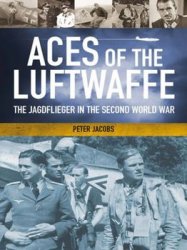Several sports, including tennis, golf, and basketball, developed in the Gilded Age. Outdoor tennis, invented in Great Britain, came to the United States via Bermuda in 1874.
There, the vacationing Mary Outerbridge of Staten Island, New York, liked tennis so well that she embarked for home with net, rackets, and balls that, upon her landing, perplexed customshouse officers. In spring 1874 she designed the first American tennis court at the Staten Island Cricket and Baseball Club. Courts were built at Lakewood, New Jersey; Tuxedo Park, New York; and Newport, Rhode Island. By 1880 more than 30 eastern clubs had laid out tennis courts. The first important tennis tournament was held in 1880 on Staten Island.
The U. S. Lawn Tennis Association (USLTA), formed in 1881, sponsored a challenge-round tournament at Newport from 1881 to 1915. Richard Sears won the first seven USLTA tournaments. The sport was played mainly by wealthy easterners, and the early champions often came from Harvard University. Robert Wrenn, Frederick Hovey, and Malcolm Whitman won the singles championships from 1893 through 1900, while Holcombe Ward and Dwight Davis captured consecutive doubles titles from 1899 through 1901. Harvard students modernized tennis by using a twist overhand service, the passing shot, and the lob and by rushing to the net. Tennis gained popularity in 1900 when Davis donated a cup for annual competition among all nations, but in particular the Davis Cup stimulated competition between the United States and Great Britain. The Americans, led by Whitman, Davis, and Ward, upset the British, 5-0, in 1900.

Advertisement for a lawn-tennis equipment manufacturer, 1882 (Library of Congress)
Golf appeared in the United States by the 1880s. The leisurely sport appealed to wealthier, older people and was dominated by the British. Robert Lockhart purchased a set of golf clubs and two dozen guttie balls (rubberlike balls made from the gum of the gutta-percha tree) in Dunfermline, Scotland, in 1887 and brought them back to his Yonkers, New York, home. John Shotts, a Yonkers butcher, permitted golfers to hit balls around his 30-acre lot. In November 1888, Scotsman John Reid established St. Andrews, the first permanent American golf club. The six-hole St. Andrews course was built on Shotts s property and shifted locations several times over the next decade.
Scottish professional Willie Dunn in 1891 built Shin-necock Hills, the nation’s first true golf course, at Southampton, New York. Dunn and 150 Indians from the Shinnecock Reservation cleared 4,000 acres of thick brush and laid out a 12-hole seaside golf links. After incorporating, Shinnecock Hills built a clubhouse and opened in 1892 with 70 club members.
In 1893 the Chicago Golf Club built the nation’s first 18-hole course. Charles Macdonald, the club’s best player, won the U. S. Golf Association’s (USGA) first amateur championship in 1895 at the Newport Golf Club in Newport, Rhode Island. The USGA also sponsored the initial U. S. Open golf tournament in 1895. The Open was increased from 36 holes to 72 holes in 1898. Foreign-born golfers won every U. S. Open tournament from 1895 to 1910. American John McDermott prevailed with a winning 307 in 1911 at the Chicago Golf Club in Wheaton, Illinois. Golf grew rapidly from 50 clubs in 1895 to 1,040 by 1900.
In 1893 the Shinnecock Hills Golf Club designed a nine-hole course for women. Within two years, other courses for women were built at Morristown, New Jersey, and Yonkers, New York. Holland Ford, by 14 strokes, won the first women’s tournament, held in October 1894 on the seven-hole Morristown course. In 1896 Beatrix Hoyt captured the first USGA-sanctioned amateur championship by two holes, with one hole left to play, at Morris County Golf Club in Convent, New Jersey. She won the next two USGA women’s amateur titles by wider margins.
Basketball, the only major sport purely American in origin, was invented by Dr. James Naismith, who taught physical education at YMCA Training College in Springfield, Massachusetts (now Springfield College). Dr. Luther Gulick, physical education department head, asked Nai-smith to conduct an indoor activity for students. Naismith invented basketball, in which participants scored by shooting soccer balls into peach baskets suspended at each end of the school’s gymnasium. In January 1892 Naismith wrote 13 basketball rules. Since his class had 18 students, Naismith assigned nine players to each side. Each team fielded three forwards, three centers, and three guards. Two centers tipped the ball at mid-court to start the game. Players committing fouls were put in a penalty box until the next basket was made. To speed the game, Naismith removed the bottom from the peach basket. The game was called “Springfield ball” and “triangle ball” before student Frank Mahan named it basketball. Basketball initially was considered a YMCA exercise rather than a serious sport. Geneva, Yale, Pennsylvania, Wesleyan, Trinity, Chicago, Iowa, Stanford, Nebraska, and Kansas soon fielded men’s varsity basketball teams, while Smith, Vassar, Wellesley, Newcomb, and Bryn Mawr had women’s basketball teams. Columbia, Cornell, Harvard, Princeton, and Yale formed the Eastern Intercollegiate League in 1901.
See also BASEBALL; BICYCLING; BOXING; LOOTBALL; HORSE RACING.
Further reading: Parke Cummings, American Tennis: The Story of a Game (Boston: Little, Brown, 1957); Donald V. Mrozek, Sport and American Mentality, 1880-1910 (Knoxville: University of Tennessee Press, 1983); Bernice Larsen Webb, The Basketball Man: James Naismith (Lawrence: University Press of Kansas, 1973); Herbert Warren Wind, The Story of American Golf, 3d rev. ed. (New York: Knopf, 1975).
—David L. Porter
Stalwarts See Republican Party.




 World History
World History





![The Battle of Britain [History of the Second World War 9]](/uploads/posts/2015-05/1432582012_1425485761_part-9.jpeg)



